
Lindgren Had No Peer In NCAA
Before Gerry Lindgren ever ran for Washington State varsity, he had set a world record, competed in the Olympics and left more than 50,000 fans roaring him to victory – all as a teenager.
Lindgren followed that with a Cougar career that made him the winningest NCAA athlete with 11 combined NCAA titles between cross country, indoor track & field and outdoor track & field. Today, he ranks No. 3 on that list and the two ahead of him (Edward Cheserek of Oregon and Suleiman Nyambui of UTEP) had four years of eligibility, while Lindgren only had three.
Collegiately, Lindgren had no peer in any sport. His six victories at the NCAA Outdoor Track & Field Championships – three straight doubles between 1966 and 1968 comprised of the 3-mile/5000 and 6-mile/10,000 – were by an average margin of more than 10 seconds. Indoors, he lost just once – to Jim Ryun in the 2-mile, relatively short for the long-distance wizard that was Lindgren. In cross country, he had one career loss, to a freshman from Oregon named Steve Prefontaine; he avenged it twice.
His dominance was nothing new.
Track & Field News called Lindgren “the 18-year-old baby of the team” in its report of the 1964 U.S. dual meet against the Soviet Union, held in front of more than 50,000 spectators in the Los Angeles Memorial Coliseum. “He stole the hearts of the sun-drenched spectators.” He won by over a homestretch in just his second attempt at the 10K distance.
The prodigy from Spokane, Washington, was finally able to attend Washington State in the spring of 1965, but rules then did not allow freshmen to compete in the NCAA. His biggest race that year came against Billy Mills – his gold-medal winning teammate at the 1964 Tokyo Olympics – as both set the same world record of 27:11.6 in a thrilling 6-mile race at the AAU national championships (Mills was first to cross the finish line at Balboa Stadium).
The NCAA and collegiate track & field will mark a momentous milestone in the spring of 2021 -- the 100th anniversary of the NCAA Championships and with that, the NCAA Track & Field Championships. In June 1921, the University of Chicago hosted the first track & field championships in NCAA history.
This point can’t be emphasized enough: Not only was the event the first for NCAA track & field, but the first championships for any sport under the sponsorship of the NCAA.
To celebrate, over each of the next 365 days, the U.S. Track & Field and Cross Country Coaches Association (USTFCCCA) will celebrate moments, student-athletes, and coaches that have made a century’s worth of championships special. From humble beginnings to important historical milestones to the modern-day, collegiate track & field has evolved with the American society.
The 2021 edition of the NCAA Division I Outdoor Track & Field Championships begin with preliminary round action on May 27-29 in Jacksonville, Fla., and College Station, Texas. The championships final site and culmination of the celebration is slated for June 9-12, 2021 at the newly rebuilt Hayward Field in Eugene, Ore.
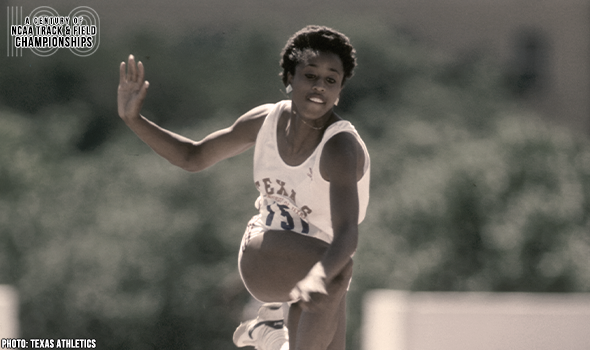
Texas’ Turner Soared To Triple Jump Greatness
Terri Turner was a two-time TJ champion at the NCAA DI Outdoor T&F Championships. When Turner won her 2nd title in 1986, she set an all-time world best of 13.66m (44-9¾).
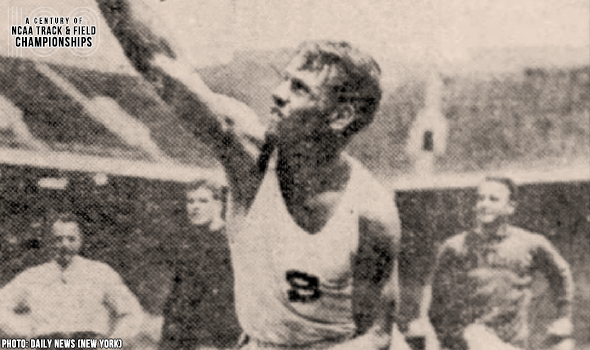
Stanford’s Rothert Starred In The Shot Put
Harlow Rothert won three consecutive shot put titles at the NCAA Outdoor T&F Championships between 1928 & 1930. He set meet records in both 1929 and 1930.

Indiana’s Kharun Set Javelin MR In 2003
Irina Kharun won the javelin title at the 2003 NCAA DI Outdoor T&F Championships with a meet record heave of 61.82m (202-10). It also helped her win by more than 30 feet!
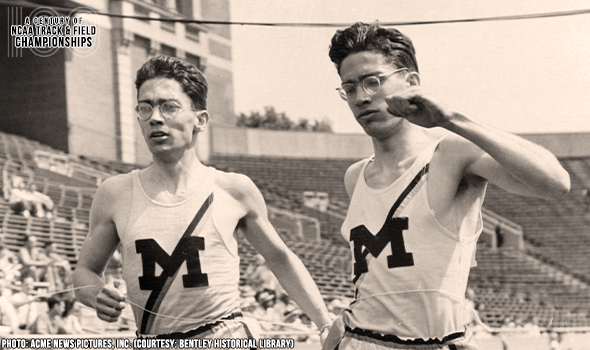
Hume Brothers Had Officials Seeing Double
Twins Robert & Ross Hume purposefully tied for the mile crown at the 1944 NCAA Outdoor Track & Field Championships. They tried again in 1945, but officials gave Ross the win.
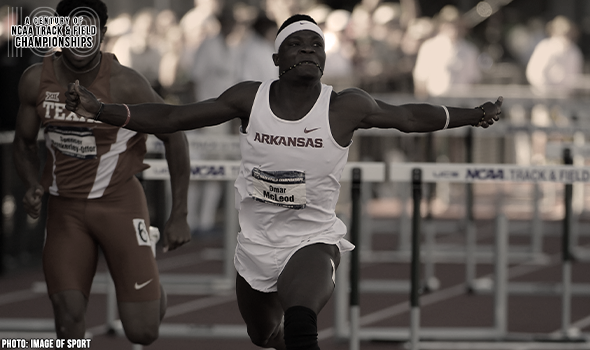
Woo Pig Sooie! McLeod Sizzled Track In 2015!
Omar McLeod clocked a sizzling 13.01 (+3.9) to win the 110HH at the 2015 NCAA DI Outdoor T&F Championships. Only one man had ever gone faster in meet history at the time.

Felicien Starred In The 100H At NCAAs
Perdita Felicien won back-to-back 100H titles at the NCAA Division I Outdoor T&F Championships in 2002 & 2003. She set a MR of 12.68 in the semifinals on the way to title No. 2.

Truly “Unbroken,” Zamperini Shined At NCAAs
Louis Zamperini set a meet record in the mile of 4:08.3 at the 1938 NCAA Outdoor T&F Championships. Zamperini, who also won the mile in 1939, saw his record last 15 years.
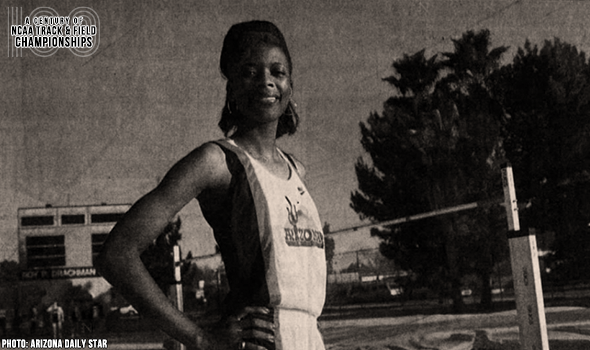
Hughes Soared To Three Consecutive HJ Titles
Tanya Hughes was the first woman to win three high jump titles at the NCAA Division I Outdoor T&F Championships. Hughes did so consecutively in 1991, 1992 & 1993.
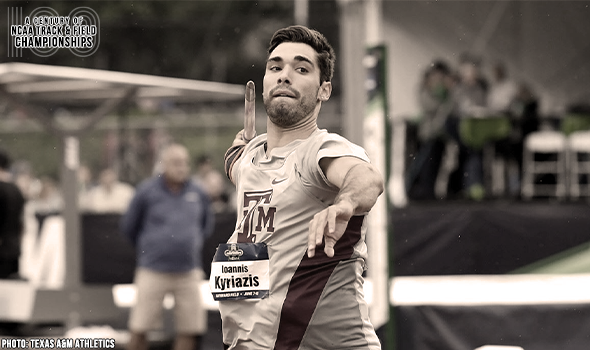
Kyriazis Made Point With Javelin In 2017
Ioannis Kyriazis set a meet record in the javelin of 82.58m (270-11) and won by more than 19 feet at the 2017 NCAA DI Outdoor T&F Championships.
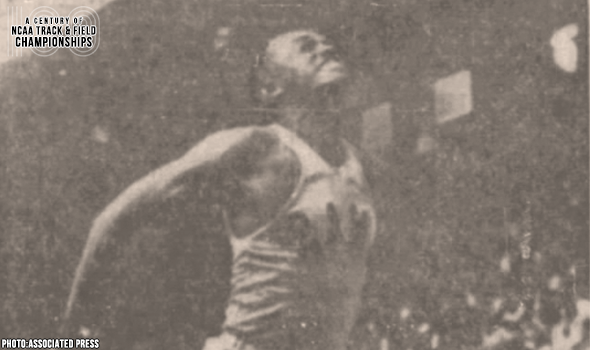
Sharpe Bounded To Meet History In 1956
Bill Sharpe became the first man to eclipse the 50-foot barrier in the triple jump at the NCAA DI Outdoor T&F Championships in 1956. Sharpe won with his 15.36m (50‑4¾) effort.

